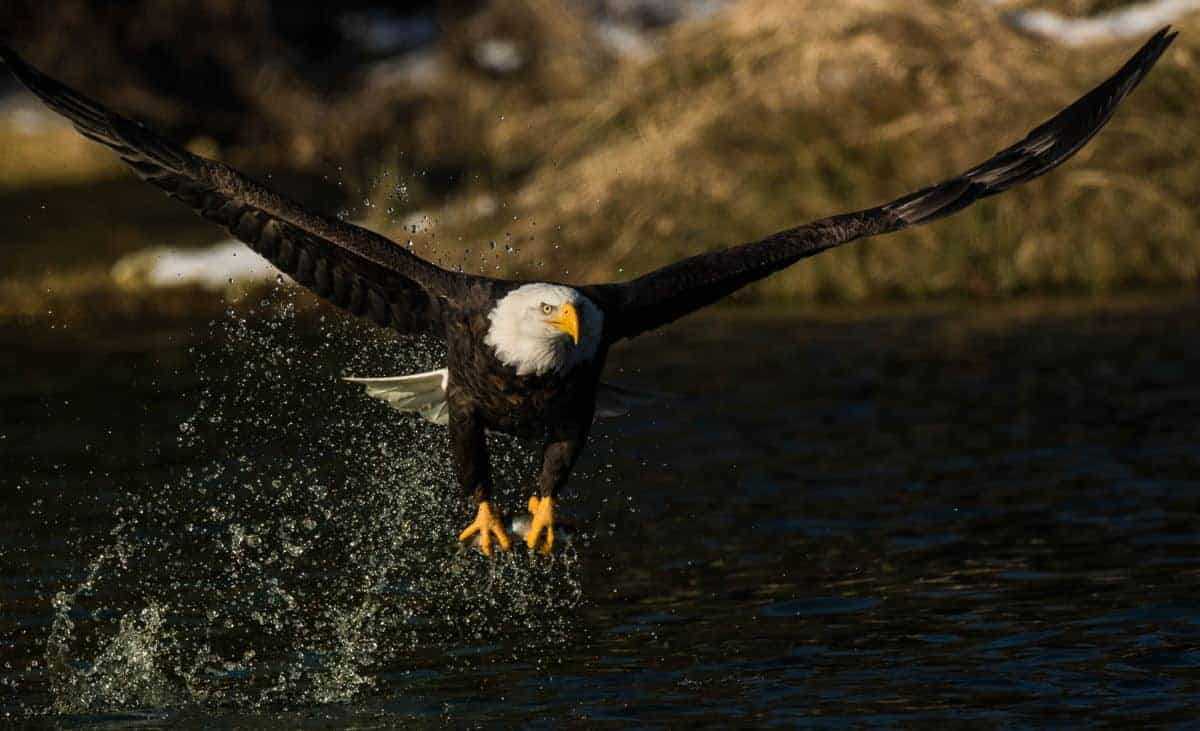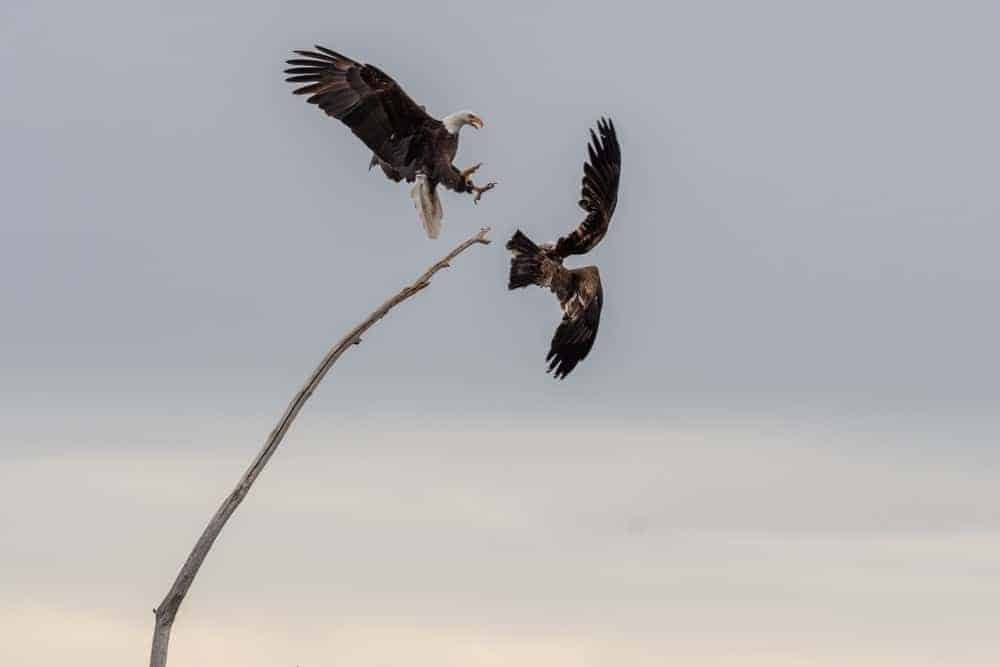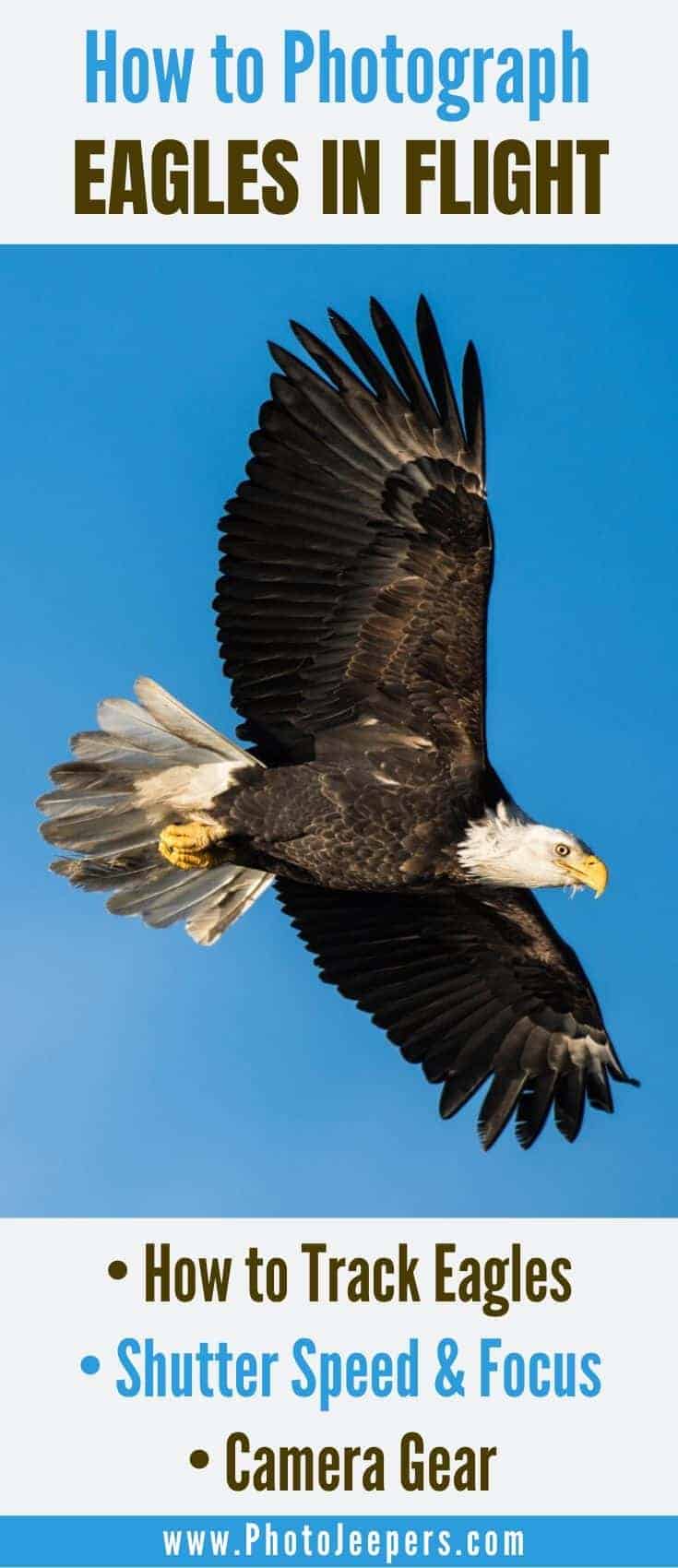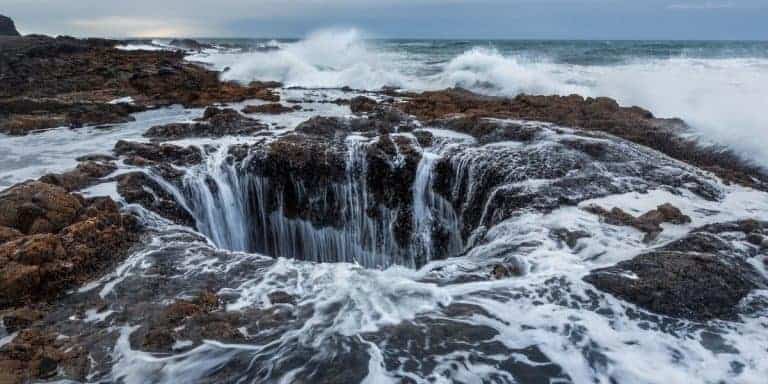Bald Eagle Photography Tour in Washington State
I love American Bald Eagles. Since childhood I have been fascinated with these majestic birds.
Living in Utah there aren’t many opportunities to photograph bald eagles in their natural habitat. They are extremely difficult to find and are usually quite a distance away.
When Jamie approached me with the opportunity to participate in a bald eagle photography tour in northwestern Washington I was amazed.
A Bald Eagle Photography Tour? Sign Us Up!
To say I was excited at the prospect would be an understatement. The more Jamie explained the details the more eager I became.
The opportunity to observe and photograph bald eagles in their natural habitat from a boat would be absolutely enthralling. On top of that it would be an opportunity to visit and photograh Seattle and the northwestern part of Washington.
Here’s a list of things to know about bald eagle photography and tours:
- Camera gear for bald eagle photography
- Bald eagle photography tour details
- How to photograph eagles in flight
- Clothing to wear for winter photography
Some of the links on this site are affiliate links, meaning if you book or buy something through one of these links, we may earn a small commission – at no extra cost to you! Read the full Disclosure Policy.
CAMERA GEAR FOR A BALD EAGLE PHOTOGRAPHY TOUR
Extra camera body – telephoto lens on one and a mid-range zoom on the other for quick changes (not essential but recommended)
Telephoto lens: 500-600mm range (teleconverters as well if you have them)
Mid-range zoom lens: 100-400mm
Wide angle lens: 24-70mm for landscape
Waterproof rainsleeve for camera – plastic type is fine
Dry bag or waterproof shell for your camera bag
Extra memory cards
Extra camera batteries
Tripod – not used on the boat, but for other bird and landscape photography off the river
Remote cable release – make sure it fits YOUR CAMERA!
Camera cleaning kit, lens cleaners, lens cloths
BALD EAGLE PHOTOGRAPHY TOUR: SKAGIT RIVER, WASHINGTON
Bald eagles return to the North Cascades and along the Skagit River in Washington state late fall through February.
If you want a once in a lifetime experience to see and photograph bald eagles, we recommend doing a bald eagle photography tour!
We booked our tour between Christmas and New Year’s. We flew into Seattle and spent one day exploring the city before driving north.
The drive to Rockport, Washington is about 2 hours north of Seattle. The boat excursion would take us on the Skagit River for about 3 hours. Wayne and Melissa who own Skagit River Photo Tours make the experience magical.

Wayne knows exactly where find the eagles, and how to position the boat so photographers can get the best views of the eagles in the trees, in flight, and as they swoop toward the river to catch fish.
We were inundated with opportunities to photograph bald eagles engaged in a variety of behavioral activities. The close proximity to the birds in their natural habitat was incredible.

The small motor in the boat is quiet and doesn’t disturb the eagles. This is especially helpful when Wayne maneuvers to get in position for a close up shot of the birds while they are feeding or sitting in low branches along the river.

The jet sleds are versatile, stable and large. Our group of 6 photographers and gear fit just fine with room for everyone to capture amazing photos!
Lodging Near the Skagit River
AIRBNB VACATION RENTALS IN BURLINGTON, WA
HOW TO PHOTOGRAPH EAGLES IN FLIGHT
First, you must know your subject and plan accordingly. Where will you find eagles, and what time of year?
Become familiar with their habits so you can anticipate their actions to capture the best photo.
That said, here are some tips for shooting eagles in flight:

1. Shutter Speed is Important for Capturing Eagles in Flight
Eagles move quickly, especially in flight. Proper shutter speed is essential for capturing a tac sharp, non-blurred image.
The faster the shutter speed, the better.
Considering that, though, other factors do come into play such as aperture size and ISO setting. Narrow depth of field is acceptable when photographing birds and larger aperture sizes can be used to facilitate faster shutter speed.
Depending on light conditions, ISO settings will need to be higher as well. The risk in higher ISO settings is the introduction of noise into the image. Keep the ISO setting as low as you can in order to use the desired shutter speed.
Generally speaking, keep shutter speeds above 1/1600 of a second to freeze motion and avoid movement blur.
If necessary, use the largest aperture setting available to you. Apertures from f4 to f8 are ideal and can vary within this range according to light conditions and distance from the subject.
If conditions allow, the following settings are best:
Shutter Speed – 1/2000 of a second or higher
Aperture – 5.6 or 6.3
ISO – 1000 or less
Slower shutter speeds are acceptable when shooting stationary or preening birds. The strong possibility does exist, however, that the bird may move or fly suddenly.
Even when shooting perched or preening eagles, keep the shutter speed at 1/1200 of a second or higher so you’re prepared for any sudden and really cool movements.

2. Learn to Track an Eagle in Flight
When an eagle is moving, you must track it with your lens. This is a skill that is honed through practice. It is much easier, of course, if the bird is flying toward you.
Develop the ability to follow the bird with your lens and press the shutter button without stopping the movement of your lens. Patience is key.
Wait until the bird has moved into the shot you desire before shooting. This saves time sorting through images in post processing, but more importantly, avoids filling up the camera buffer and missing the best shots.

3. Set the Camera to Continuous Auto Focus
Continuous auto focus is a setting that will assist in tracking the eagle and keeping it in focus throughout the movement.

CLOTHING TO WEAR FOR WINTER PHOTOGRAPHY
Our Winter Gear Guide details all the clothing and footwear you could need to be prepared for the Pacific Northwest weather of snow, rain, or high winds.
The Skagit River tour is in the mountains near Rockport, Washington. It was not raining, but VERY COLD with snow on the ground during our time there. The group that had gone one week before us experienced a bit warmer weather, but it rained the entire time.
It is important to be prepared for any type of weather in the pacific northwest – the key is packing and wearing layers!

Essential Winter Clothing for Outdoor Photography
- Wicking and quick-drying base layers/long underwear
- Fleece or insulated jacket
- Wool, down or heavy-weight insulated jacket
- Waterproof rain jacket
- Waterproof rain pants
- Insulating hat
- Insulating winter gloves – try these awesome photography gloves!
- Fleece neck gaiter or buff
- Waterproof hiking boots and/or rubber boots
- Rechargable hand warmers – these are game changing!
Winter Clothing for Outdoor Photography









I really respect photographing wildlife, as it often requires long time patiently waiting for the right moment in unconvenient weather conditions. Again, amazing photos from you guys!
Thank you, Kat. Yes, wildlife photography requires PATIENCE and PRACTICE. Watching wildlife in their natural element is amazing!
How can I sign up for a tour (: this would be a dream co.e true to get shots like these
Tony – bald eagle photography is spectacular! I don’t think Aaron does the eagle tours anymore, but we highly recommend you contact Wayne at Skagit River Tours, north of Seattle: https://www.skagiteagles.com/skagit-river-eagle-viewing/skagit-bald-eagle-photo.html – he’ll do a wonderful job getting you to the eagles, and share photography tips as well. Email jamie@photojeepers.com if you have any more questions.